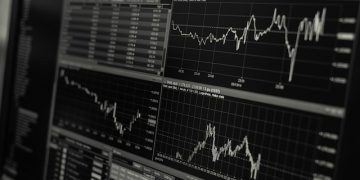Text size

People wearing face masks in a shopping district in Hong Kong, China.
Anthony Kwan/Getty Images
Rising U.S. interest rates can be bad news for emerging markets, as capital flees to improving returns in the world’s biggest market. In 2013, then-Federal Reserve chairman Ben Bernanke started the so-called Taper Tantrum by merely suggesting he might dial back quantitative easing.
Emerging market stocks dropped 15% in a month. A real Fed tightening cycle in 2018 coincided with an 8% loss for emerging market equities that year.
Treasury yields have climbed a quarter of a percentage point since Jan. 1, driven by renewed fears of inflation. But no new tantrum has come yet. The
iShares MSCI Emerging Markets
exchange-traded fund (ticker: EEM) has gained 12% year-to-date, trouncing a 4% advance in the S&P 500.
Emerging-market assets “are still fairly well behaved because U.S. rates are rising for the ‘right’ reasons,” says Alejo Czerwonko, chief investment officer for Americas emerging markets at UBS Global Wealth Management. That is, a bit of healthy reflation in the air as vaccines and fiscal stimulus balm the wounds of the pandemic.
The current 10-year Treasury yield around 1.2% would still have been near an all-time low pre-Covid 19, notes Eric Baurmeister, senior portfolio manager for emerging markets debt at Morgan Stanley Investment Management. Alarm about rising prices looks premature with 10 million Americans still out of work. “We’re just not up to inflation yet, which is a nice environment for EM,” he says.
Emerging markets themselves are in better shape to withstand some centripetal force than in 2013, adds Arthur Budaghyan, chief emerging markets strategist at BCA Research. “Then you had large current account deficits and overvalued currencies across EM,” he says. “The vulnerabilities now are much less.”
This time is different than 2018 too, says Marko Papic, chief strategist at the Clocktower Group. Fed chairman Jerome Powell, who hiked rates a full percentage point that year, has turned ultra-dove during the pandemic even as Washington cranks unprecedented spending. That means the Fed could trail inflation, when it comes, depressing effective returns from U.S. bonds. “Real yields will go down faster in the U.S. than anywhere else,” Papic says.
A more substantive threat to emerging markets this year may come from China, which is tapping its policy brakes while the U.S. floors the gas pedal. With coronavirus fading, Beijing will return to deleveraging economic engines like the property market and shadow banking, Budaghyan expects.
That’s sound policy but may prove a rude awakening for commodities and industrial stocks that have been soaring on assumed Chinese demand. Especially if Beijing overdoes it a bit. “The real risk is that China makes a policy mistake severe enough to offset $2 trillion in U.S. stimulus,” Papic says.
Another risk that emerging markets increasingly share with developed ones is valuations that price in a vibrant post-pandemic recovery. Bargains have disappeared as less fashionable sectors join a rally that last year focused on Asian tech stocks, says Josh Rubin, an emerging markets portfolio manager at Thornburg Investment Management.
He’s still seeing value in names like Asian insurance companies
Ping An
(2318. Hong Kong) and
AIA Group
(1299: Hong Kong), as a way to play the long-term trend toward “financial inclusion,” or
China Gas Holdings
(384.Hong Kong), which is riding the carbon reduction wave by replacing coal power in rural China. But it’s getting harder. “A 2021 cyclical recovery is pretty well forecast,” Rubin says. “We have to look now into 2022 and beyond.”




